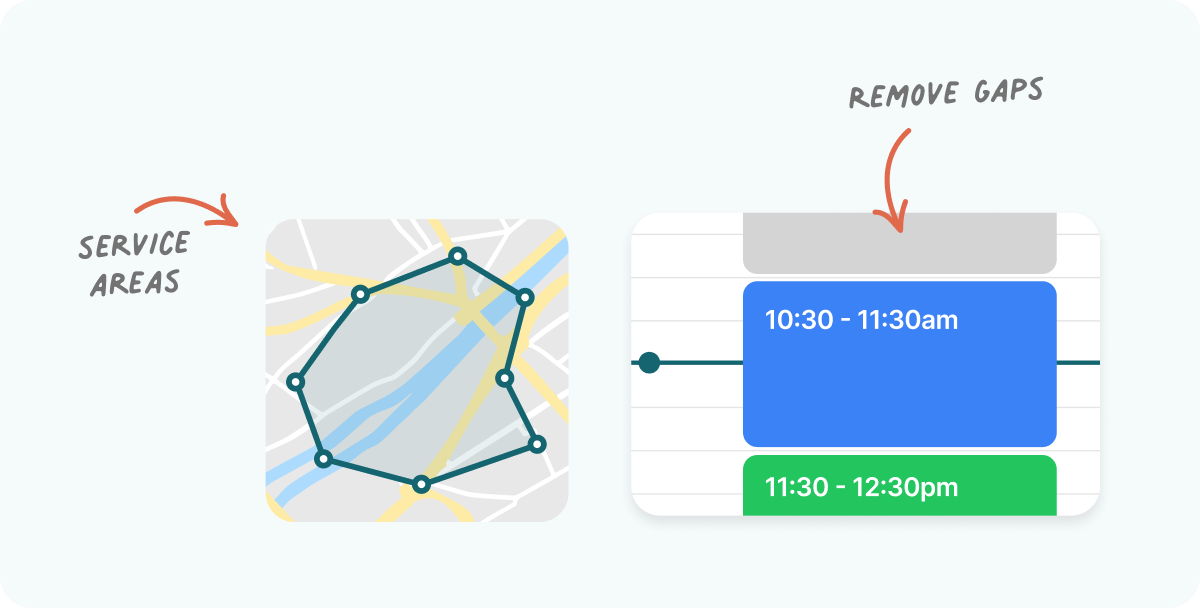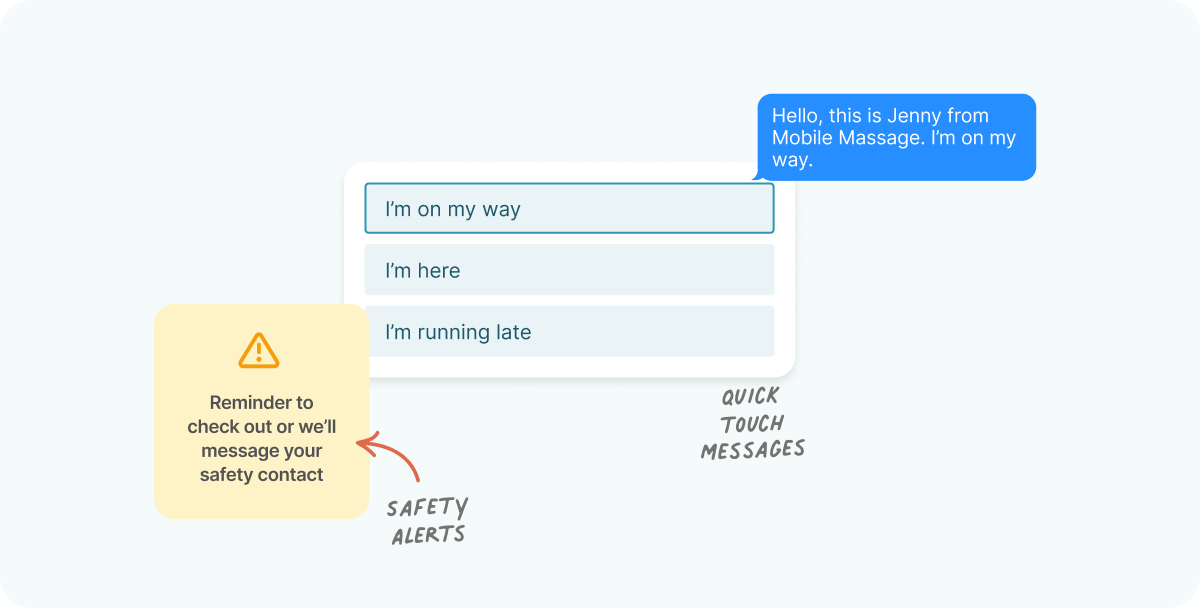Pricing Update & Annual Discounts:
Learn More.webp)
Table of Contents

Experience Better Practice Management Today!
Starting at $28.05/month
No Credit Card Required

Experience Better Practice Management Today!
Starting at $30/month
No Credit Card Required
Managing a thriving clinic is already an achievement, but combining it with a mobile healthcare practice unlocks even greater opportunities.
With the U.S. mobile health clinic market projected to reach $2.5 billion by 2030, now is the time to embrace mobile healthcare. Expanding into mobile care not only adds flexibility but also diversifies your revenue streams.
Balancing a clinic and mobile practice comes with challenges, but with the right strategies, you can manage both seamlessly. This guide will help you unlock the potential of a hybrid healthcare model and overcome common obstacles to success.
Expanding into a mobile practice while maintaining your clinic is not just a business decision—it’s a strategic move to meet growing patient demands and deliver care where it’s needed most. Let’s take a closer look at the benefits and challenges of operating both models, including the benefits of mobile health clinics.
While the potential rewards are significant, careful planning and preparation are essential to overcome these challenges and achieve success.
Before jumping into hybrid operations, you need to lay a solid foundation. A well-structured business model will help you manage both your clinic and mobile practice without compromising service quality or efficiency.
Start by assessing if your clinic is ready to handle the extra demands of adding a mobile practice.
Is your clinic stable, with consistent revenue and workflows? If not, you may want to optimize those processes first.
You should also evaluate your own readiness—do you have the time, skills, and tools to effectively manage two models? If you’re already stretched thin, it’s better to address these gaps now before expanding.
You need to understand whether people in your area are actively searching for the services you already offer at your clinic—only in a mobile format.
For instance, if you run a chiropractic clinic, check if there’s demand for chiropractic care at home. Use tools like Google Trends or keyword research platforms to see if people are searching for terms like "mobile chiropractic services" or "chiropractor home visits."
Also, consider underserved areas or neighborhoods where patients might struggle to access care.
For example, rural regions or busy urban hubs may have gaps in healthcare services. By researching these trends and identifying local demand, you can ensure your mobile practice aligns with what people need. Tailoring your services to meet this demand helps you build a loyal patient base while filling critical gaps in your community.
Balancing a clinic and a mobile practice means carefully planning your resources. Are you fully staffed, or do you need more versatile team members who can adapt to both environments?
Do you have the right equipment or the technology to manage operations efficiently? It’s a good idea to identify any gaps and create a plan to address them now, so you’re not caught off guard later.
Also, think about your current workload— ask yourself if you can manage both models, or do you need extra help.
Financial preparation is a must when building a hybrid model. Take time to outline your budgets for startup and recurring costs, including vehicles, equipment, fuel, and staffing.
You should also look into funding options like grants, loans, or partnerships to ease the financial load. With a solid financial foundation, you can focus on growing your practice without worrying about unexpected costs.
Once your foundation is set, focus on best practices to seamlessly manage both clinic and mobile operations.
Managing a hybrid healthcare practice that combines clinic and mobile services can be rewarding yet challenging.
Balancing two models requires meticulous planning, seamless coordination, and the right tools to ensure both efficiency and patient satisfaction. Let’s explore best practices in detail to help you successfully manage both sides of your practice while enhancing the patient experience.
Efficient time management is crucial for balancing clinic operations and mobile visits. Without proper planning, you risk over-scheduling or losing valuable time in transit.


Scheduling can get tricky when managing both clinic and mobile services, but using a centralized system can reduce confusion and eliminate manual errors.
Related read: 7 Must-Check Factors Before Choosing Practice Management Software

Helpful read: Avoid These 12 Mistakes: Proven Strategies to Grow Your Medical Practice
A standardized workflow helps ensure consistency in patient care and smooth operations across both your clinic and mobile services.
Ensuring consistent care, no matter where the service takes place, is key to patient retention and satisfaction.
Clear communication is essential for a well-coordinated hybrid model. It ensures that everyone is on the same page, improves collaboration, and helps build trust with patients.
Your team is your biggest asset, and investing in their skills and morale is key to running a successful hybrid practice. Here’s how you can support them:
Growth is exciting, but if you expand too quickly, you could stretch your resources thin. Taking a strategic approach will help you grow sustainably.
Technology can be your biggest ally when it comes to managing the complexities of a hybrid healthcare model. Here’s how you can make it work for you:
Additional Read: 5 Time-Saving Techniques for Streamlining SOAP Note Writing
Adapting to change is crucial if you want your practice to succeed long-term. By regularly evaluating your operations, you can figure out what’s working and where you need to improve.
We asked the health professionals from different practices how they manage two different business models effectively. Here are few of their tricks:
"Balancing a physical clinic with a mobile health practice demands a strategic approach to ensure efficiency and maintain high-quality patient care. Here's my top strategy:
To facilitate seamless communication and task allocation between in-clinic and mobile teams we rely on good data integration systems, i.e., a centralized electronic health record (EHR) system is essential to harmonize patient data across settings. By enabling both teams to access and update records in real time, continuity of care is maintained, minimizing errors and redundancies.
In addition, establishing clear protocols for patient transitions between physical and mobile care reduces confusion and ensures that each team member knows their role in the patient's journey.
Lastly, I'd like to mention Situational Training and Feedback Loops. What I mean by that, is that regular skill-building workshops and simulations, combined with structured feedback, keep the team adept at working around complexities unique to both environments.
These strategies not only improve operational efficiency but also build patient trust, at least that is what our data is telling us. And data rarely lies."

Author: Jabe Brown
Founder, Melbourne Functional Medicine
"I recently discovered that blocking specific days for clinic versus mobile visits helps maintain my sanity and provide better care to my adolescent patients. On Mondays and Wednesdays, I stay at the clinic for intensive therapy sessions, while Tuesdays and Thursdays are dedicated to mobile visits, which has reduced my travel stress and given me more quality time with each patient.
Having clear boundaries between clinic and mobile days also lets me pack the right resources and mentally prepare for each setting, making me more present and effective with my clients."

Author: Aja Chavez
Executive Director, Mission Prep Healthcare
The main challenges include managing scheduling conflicts, maintaining consistent care across both settings, ensuring efficient resource allocation, and facilitating seamless communication between teams.
Noterro centralizes appointments, patient records, and workflows, streamlining scheduling, automating tasks, and improving communication, making it easier to manage both clinic and mobile services.
Noterro GO helps by providing real-time patient data, automated check-ins, GPS navigation, and mobile-specific workflows, reducing administrative burdens and improving efficiency during mobile visits.
Standardize patient intake, use a unified practice management system, and maintain clear communication between teams to ensure continuity of care and smooth transitions between clinic and mobile services.
Yes, Noterro handles payments for both mobile and clinic-based services, streamlining billing and payment processing for both service models.
Tags



